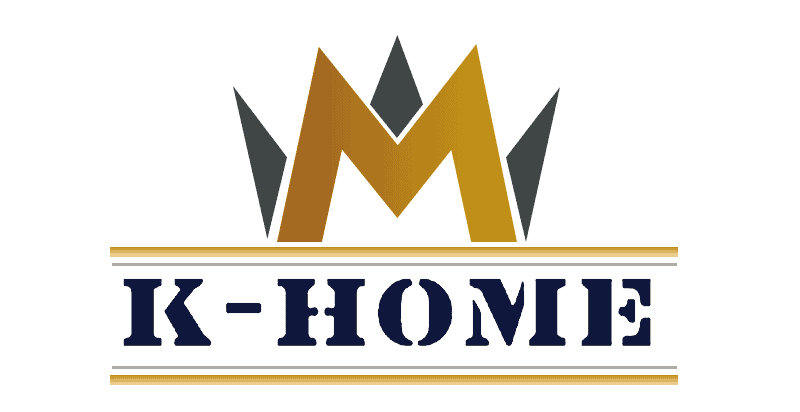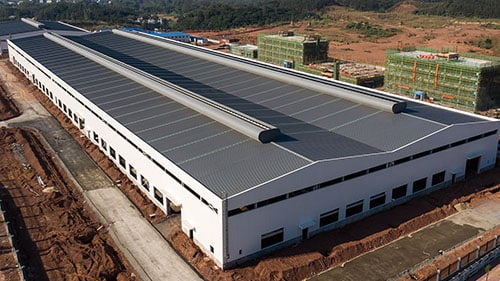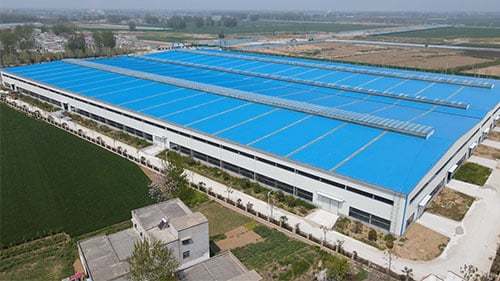Steel workshop buildings are constructed entirely of steel, with their core load-bearing components including steel columns, beams, foundations, and roof trusses. With the development of modern industry, steel frame workshops have gradually become the mainstream choice for new factory buildings, particularly those with large spans and heavy loads, for which steel roof trusses are widely used. Furthermore, the wall systems can be enclosed with lightweight structures or brick walls, ensuring both structural stability and practicality.
Steel structure workshops have gained widespread recognition in the construction industry due to their unique advantages. Their rapid construction, relatively low weight, and excellent earthquake resistance, combined with their environmental advantages, have led them to gradually replace traditional, heavy reinforced concrete structures in industrial factory designs.
Advantages and disadvantages of steel structure workshop
Advantages of steel structure workshop
- Wide Applicability: Steel-structured buildings are suitable for a wide range of applications, from factories and warehouses to agricultural buildings and office buildings. They are suitable not only for single-story, long-span structures, but also for multi-story and high-rise buildings.
- Fast Construction: Steel-structured building components can be prefabricated in the factory, requiring only simple assembly on-site, significantly shortening the construction period.
- Durability and Easy Maintenance: Steel structures, precisely designed through computer graphics, are weather-resistant and require minimal maintenance.
- Aesthetic and Practical: The sleek, simple lines of steel structures create a strong modern feel. Colored wall panels offer a variety of color options, while flexible wall materials enhance architectural flexibility.
- High Strength and Lightweight: Although steel is denser than other building materials, it possesses exceptional strength. Under the same load conditions, steel structures are lighter, making large-span structures possible. 6. Superior Plasticity and Toughness: Steel’s excellent plasticity prevents sudden fractures in the event of accidental or localized overloads. Its toughness also makes the structure more adaptable to dynamic loads.
- Environmental Advantages: Steel structures are considered green building systems. Steel itself possesses high strength and efficiency, is highly recyclable, and requires no formwork for construction, making it environmentally friendly.
In terms of disadvantages, steel structures also have certain shortcomings:
- Fire protection: When temperatures exceed 150°C, the strength of steel decreases significantly; at temperatures reaching 500-600°C, its strength is almost zero. Therefore, in the event of a fire, the steel structure may not be able to withstand the prolonged flames and collapse. Therefore, for steel structures with special fire protection requirements, specialized insulation and fire resistance measures are required to ensure their safety. This should be clearly communicated to the manufacturer before the steel structure design is completed.
- Susceptibility to corrosion: Steel is prone to rusting in humid environments, especially in the presence of corrosive media. Regular maintenance is required. K-HOME’s steel structures incorporate rust-proofing processes during the manufacturing process to extend the building’s service life.
design requirements for steel structure workshops
The design of a steel structure workshop building is central to a successful project. It not only impacts its aesthetic appearance but also serves as the foundation for the entire factory construction process. The design must strictly adhere to national building codes and industry standards to ensure the building’s strength and stability under loads such as wind, snow, and earthquakes. A sound design can reduce construction costs by precisely calculating and controlling material usage, avoiding unnecessary waste. Furthermore, consideration of ease of construction is essential to ensure a smooth construction process and minimize additional costs.
drawings Design for steel structure workshop
Detailed drawings provide clear guidelines for construction personnel, helping them accurately understand the design intent and installation requirements, thereby reducing errors and rework. Detailed annotations and instructions in the design drawings enable construction personnel to quickly locate components and understand the installation sequence, thereby improving construction efficiency. Furthermore, the design drawings must consider the long-term use of the factory building to ensure ease of maintenance.
During the design process of a steel structure industrial workshop building, professional technical personnel should review the drawings to ensure accuracy and mitigate risks of quality and schedule delays that could be caused by drawing issues. Furthermore, a construction organization design tailored to the specific characteristics of the fabrication and installation phases should be developed to ensure a smooth construction process.
Seismic design requirements for steel structure workshops
The seismic design of steel structure factories is crucial, as it affects their stability and safety during earthquake disasters. During design, the overall layout of the factory building should be regular and orderly, avoiding complex or irregular layouts in both plan and elevation. This will reduce the torsional effects and stress concentrations caused by earthquakes.
When selecting steel, its quality grade must be strictly controlled to ensure sufficient strength and toughness. Steel designed for low-temperature environments should be of even higher quality. Furthermore, the dimensions of steel components must be properly controlled to prevent local or overall instability. Strengthening the connections between components is also an important measure to improve the overall deformation capacity of the structure.
For different earthquake intensities and geological conditions, the appropriate structural system, such as a frame structure or a frame-and-braced structure, should be carefully selected. Furthermore, the building’s mass and stiffness must be evenly distributed, with balanced loads and coordinated deformation to prevent uneven structural stiffness from negatively impacting its seismic performance.
For joint connections, high-strength bolts or welding should be used to ensure a secure and reliable connection, thereby reducing the risk of joint damage during an earthquake. A proper support system layout is also essential, enhancing the overall stability of the factory building.
For most steel workshop buildings, dedicated seismic joints may not be necessary. However, for multi-story buildings or those with complex structures or irregular elevations, additional seismic joints should be added based on actual conditions. Seismic joints must meet relevant code requirements, with a width of at least 1.5 times the width of joints in comparable reinforced concrete buildings to ensure the structure’s independence and stability under earthquakes.
During the construction phase, installation work must strictly adhere to design requirements to ensure tight and reliable component connections. Attention must also be paid to construction quality control to avoid any structural damage. Regular inspection and maintenance of steel-structured factories is also essential. This helps to promptly identify and address potential safety hazards, thereby ensuring the stability and safety of the factory building during an earthquake.
Heat-resistance design of steel structure workshop
Because steel has excellent thermal conductivity and its mechanical properties significantly degrade at high temperatures, the fire resistance of steel workshop buildings is a key consideration.
For example, when heated above 100°C, the tensile strength of steel decreases with increasing temperature, while its plasticity gradually increases. At 250°C, while the tensile strength slightly increases, the plasticity decreases, resulting in blue brittleness, and the impact toughness also decreases significantly. Once the temperature exceeds 300°C, the yield point and ultimate strength of steel decrease significantly. In actual fires, the critical temperature at which a steel structure loses its static equilibrium stability is approximately 500°C. Once this temperature is reached, the steel’s strength decreases significantly, potentially leading to the collapse of the entire structure. Fire temperatures often reach 800-1000°C, so effective fire prevention measures must be implemented to ensure the safety of steel structure factories.
To improve the fire resistance of prefab steel structure workshops, steels with high-temperature strength and thermal stability, such as heat-resistant steels like Q345GJC and Q420GJC, can be selected. Applying fire-retardant coatings to the steel structure’s surface is also an effective method, significantly slowing the softening time of steel at high temperatures. A well-designed thermal insulation layer and efficient ventilation and heat dissipation system are also essential. The thermal insulation layer should be constructed of high-temperature-resistant materials, such as rock wool and aluminum silicate fiber, to reduce the impact of external heat sources on the steel structure. The ventilation and heat dissipation system can utilize natural wind pressure or mechanical ventilation to accelerate the exhaust of hot air from within the factory building.
In addition, installing high-temperature alarms and firefighting equipment such as automatic sprinkler systems and gas fire extinguishing systems is crucial. These measures can be activated quickly at the initial stage of a fire and effectively control its spread. These comprehensive fire prevention measures can significantly improve the heat resistance of steel structure factories, ensuring their safety and stability during operation.
Construction process of steel structure workshop
The construction process for a steel structure factory building encompasses multiple steps, including preliminary preparation, material procurement, structural assembly, welding and inspection, and final corrosion and fire protection treatments. These steps must be seamlessly integrated to ensure the safe and efficient construction and commissioning of the factory building.
- Site Survey: A detailed survey of the construction site is conducted to understand the actual conditions and lay the foundation for ensuring construction quality.
- Construction Layout: Based on the design drawings, use a theodolite or level to verify the axis and elevation, clearly define the construction location, and make detailed markings.
- Foundation Pre-embedding: Before pouring the foundation concrete, bolts must be pre-embedded. Levels and theodolites are used to precisely control the horizontal elevation and verticality.
- Steel Column Hoisting: Hoisting of the steel columns can only begin after the concrete at the column base reaches 95% of the design strength. During the hoisting process, the verticality of the steel beams must be monitored in real time using a theodolite to ensure accurate hoisting.
- Wall Purlin Installation: Using a single-hook, multiple-lift method or a single-piece lifting method, hoist the purlins to the designated location, carefully calibrating their spacing and straightness, and finally securing them with bolts.
- Wall Panel Installation: Starting from one end, install the wall panels one by one according to the purlin positions, ensuring a tight fit between each panel. Secure the panels to the purlins with screws. Also, waterproof the joints between the panels to ensure the building’s waterproof performance.
- Purlin Installation: For thin-walled steel purlins, cranes or manual lifting can be used. Bolt them directly to the purlin support plates to ensure a secure and reliable connection.
- Painting: After the steel structure is completed, the metal surface must be cleaned of any stains. Then, anti-rust paint, putty, phosphate primer, and topcoat are applied.
- Final Inspection: Finally, a comprehensive inspection of the steel structure factory building is conducted based on the design drawings and construction plan to ensure that all construction work meets design requirements and thus ensures the factory building’s safety.
K-HOME:steel workshop building manufacturer
As a professional PEB manufacturer, K-HOME is committed to providing you with high-quality, economical prefabricated steel structure buildings.
Committed to Creative Problem Solving
We tailor each building to your needs with the most professional, efficient and economical design.
Buy direct from the manufacturer
Steel structure buildings come from the source factory, carefully selected high-quality materials to ensure quality and durability. Factory direct delivery allows you to get prefabricated steel structure buildings at the best price.
Customer-centric service concept
We always work with customers with a people-oriented concept to understand not only what they want to build, but also what they want to achieve.
1000+
Delivered structure
60+
countries
15+
Experiences
Henan K-HOME Steel Structure Co., Ltd. has been deeply engaged in the steel structure manufacturing industry for over 20 years, serving high-demand markets in North America, Europe, and Asia. We provide customized solutions that meet the strictest local building codes, ensuring structural safety and reliability.
K-HOME specializes in customizing various steel structure factory buildings to fully meet your architectural needs. We offer highly flexible customization services, allowing us to design clear-span or multi-span frame structures based on project requirements, and support personalized adjustments to building dimensions, exterior colors, and door and window layouts.
Our steel structure products are manufactured in strict compliance with China’s GB standards while also offering international adaptability. For overseas projects, our engineering team is proficient in international standards such as American Standards (ASTM) and European Standards (EN). We will conduct professional structural review and calculations based on the local standards to ensure full compliance with local building regulations.
All steel structure kits undergo precise load calculations, ensuring excellent structural performance and the ability to withstand extreme weather conditions, including strong winds (up to a force 12 typhoon) and heavy snow (up to 1.5 kN/m² snow load). Whether it’s an industrial plant, logistics warehouse, commercial center, or sports stadium, we provide safe, reliable, and cost-effective steel structure solutions.
Leveraging extensive project experience and technical expertise, K-HOME is committed to providing global clients with one-stop services, from design consultation to production and installation, ensuring that each project achieves the highest quality standards and economic benefits.
Contact Us >>
Have questions or need help? Before we start, you should know that almost all prefab steel buildings are customized.
Our engineering team will design it according to local wind speed, rain load, length*width*height, and other additional options. Or, we could follow your drawings. Please tell me your requirement, and we will do the rest!
Use the form to reach out and we will be in touch with you as quickly as possible.
About Author: K-HOME
K-home Steel Structure Co., Ltd covers an area of 120,000 square meters. We are engaged in the design, project budget, fabrication, and installation of PEB steel structures and sandwich panels with second-grade general contracting qualifications. Our products cover light steel structures, PEB buildings, low-cost prefab houses, container houses, C/Z steel, various models of color steel plate, PU sandwich panels, eps sandwich panels, rock wool sandwich panels, cold room panels, purification plates, and other construction materials.



